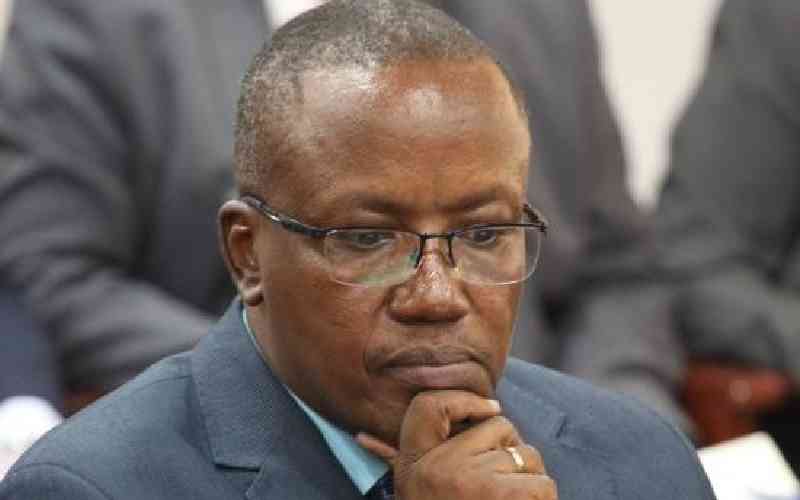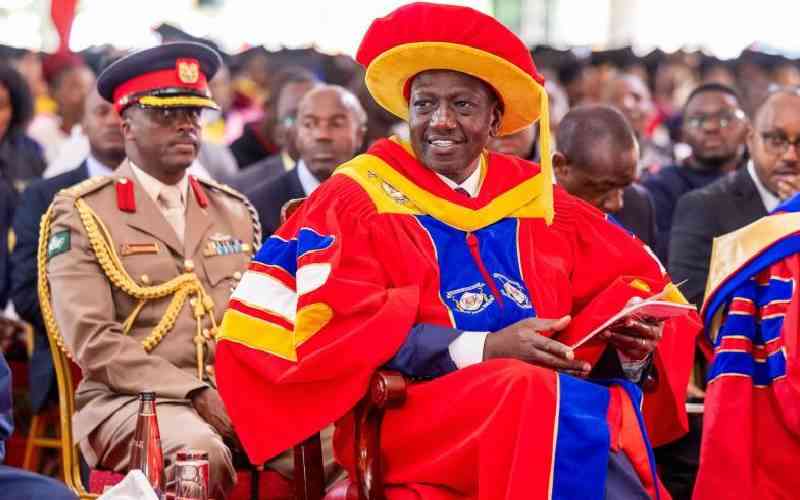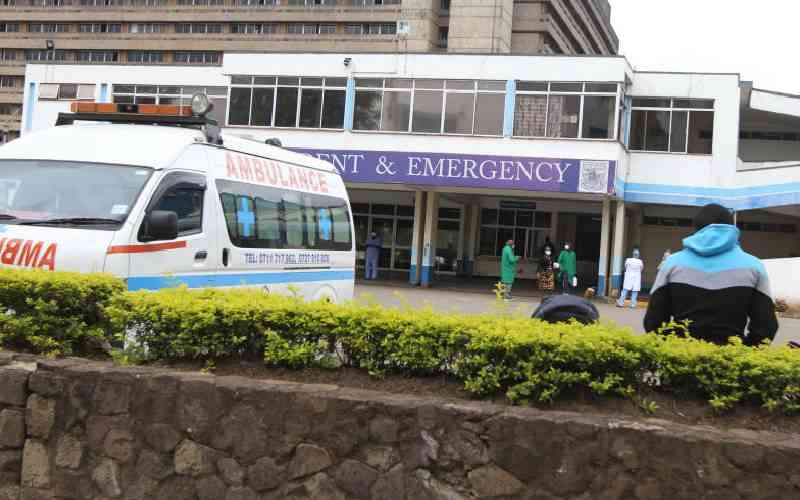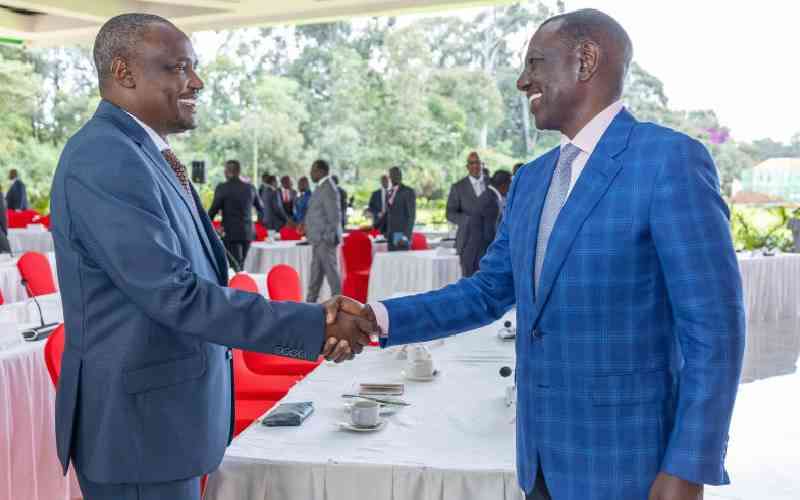Kenya: A Nairobi Muslim youth centre known in the past to have been a recruitment ground for terrorist organisations is facing its most serious crisis in its six years of existence.
The Pumwani-based Muslim Youth Center (MYC), which is also identified as Pumwani Muslim Youth Centre or Al Hijra, has been on security forces‘watch lists for years.
Some of its senior leaders and founder members are known to have died while fighting for the Al Shabaab in Somalia. Others are languishing in the Luzira Maximum Security Prison in Uganda, while others have been victims of hit squads.
One year after the Westgate Shopping Mall attack, the movement blamed for assisting in carrying out the attacks is a shadow of its former self.
Security agencies identify the group as the first local terror outfit.
Founded in December 2008 by Ahmad Iman Ali, an engineering graduate from the Jomo Kenyatta University of Agriculture and Technology, MYC was initially a positive influence on Muslim youth around the country, with its model of economic and social activism combined with charity work.
The roots of MYC are traced to Majengo, in Pumwani, a slum located a stone‘s throw way from Nairobi‘s city centre.
It is from Majengo that the highest number of Kenyan fighters for Al Shabaab in Somalia are said to originate. The young Al Shabaab fighters are accused of planning to wage jihad (holy war) in Kenya and across the East African region. Pumwani has emerged as a kind of jihad hotbed.
On the first visit to the area to unravel how the controversial outfit was formed, Mzee Maalim Hassan, a frail, old man with failing eyesight, tells us how Pumwani came about.
„In the period between 1902 and 1905, our people who used to live near the current Nairobi Fire Station were relocated to Kileleshwa to give more room for the formation of a municipal council,“ the 75-year-old narrates.
Another resettlement came about when that area was made a European zone.
“They were later moved from Kileleshwa to Mji Wa Mombasa, an area located on Park Road, formerly known as Fort Hold Road, near Amadia Mosque. There was also another neighbourhood in the area, known as Mji Wa Maskini, inhabited by Muslims. “
Unfortunately for the Muslim residents, the area was zoned as an Asian neighbourhood.
In the early 1930s, they were moved from Mji wa Mombasa and Mji wa Maskini to Shauri Moyo area, after being compensated for their property. The colonial government built new houses for them.
Stay informed. Subscribe to our newsletter
„The name Shauri Moyo comes from the Kiswahili ‚kushauri moyo‘, meaning that they were settled there to give them time to consult their hearts on whether they wanted to move to another place or not,“ Maalim explains.
Soon afterwards, the chief native commissioner suggested that the Muslims be taken to the unoccupied land near Shauri Moyo for permanent settlement. This place is the Majengo area near Pumwani.
„He said that after being settled in the area, they would pumua. This is the Kiswahili word for ‚breathe‘, signifying a sigh of relief. “
Even today, most of the inhabitants of Majengo are Muslims.
More than 80 years ago, their ancestors started the construction of the Pumwani Riyadha Mosque.
Alongside Masjid Musa is Mombasa, the two are Kenya‘s most famous and controversial mosques. They have been associated with the radicalisation of youth, financingn of Al Shabaab and recruitment of youth for the terror group.
„It‘s true that members of our mosque went to join Al Shabaab, but it was out of their own volition. A lot has changed since then and whatever happened should not lead to a blanket condemnation of all the Muslims of Majengo, “says Issa Muigai, a member of the Pumwani Riyadha Mosque committee.
The story of how the youth were easily seduced into the battlefield in Somalia starts with MYC and the issues they raised years ago, but which are yet to be resolved.
In December 2008, a group of angry youths, frustrated by unemployment and poverty, decided to form an organisation to push for their rights and economic empowerment.
The group was led by the fierce, charming and bright Ahmad Iman Ali, who was to become the chairman. Other top officials were Hussein Ally (secretary) and Abdi Mohamed Mbithuka (treasurer).
According to reports, Iman Ali was designated an amir, and Al Shabaab‘s representative for Kenyan affairs on January 10, 2012.
The MYC constitution signed by the three officials said the group was a community-based organisation meant to provide religious counselling for young people, further the cause of Islam and advocated for justice, human rights and inclusiveness.
A few months after formation, it became a ‚rights forum‘that articulated the social, economic and religious grievances of the youth of Majengo. Their inspiration was successful revolutionaries like Che Guevara and Fidel Castro.
„I remember Iman Ali telling the youth to rise up and fight for their rights “says Abdalla Iddi, who worked in the same office with the young chairman.
Their first task was to uproot officials of the Pumwani Riyadha Mosque in a protracted fight that led to weeks-long tension in the area.
Ahmed Iman first convinced the mosque officials to appoint Pumwani Muslim Youth members as ‚rent collectors‘for their various properties within Majengo and Gikomba areas. Later, he led a violent coup that saw him appointed the mosque committe secretary on June 7, 2009.
„MYC helped the local youth a lot. It operated the first library in the neighbourhood, ran a madrassa (Islamic religious school) and nursery school, and had a feeding programme for orphans. They also took care of the elderly and widows, “Issa recalls.
However, as they carried out their activities, the officials grew weary of corruption and a system that made it almost impossible for them to free the local young people from poverty and unemployment. Issa explains that many of the local youth could not get jobs, leave alone a single meal at the end of the day.
During this period, some of the youths started leaving for Somalia to fight for Al Shabaab, motivated by the promise of a stipend to take care of their families, and an extreme religious conviction to wage jihad.
Details of what was happening remained hidden until the UN Monitoring Group on Eritrea and Somali released a report in 2011 that said the mosque was funding Al Shabaab, and MYC was responsible for the recruitment.
Facilitate Travel
According to the 2011 UN report, MYC rapidly expanded from the year 2009, with its membership comprising the „largest and most structurally organised non-Somali group within Al-Shabaab“.
“Members of the group openly engage in recruiting for Al Shabaab in Kenya and facilitate travel to Somalia for individuals to train and fight for jihad,“ the report said..
MYC is said to have developed a network of followers and sympathisers in the towns of Eldoret, Garissa and Mombasa.
The 2011 report identified the Nairobi MYC leaders as Amiir Idriss Nyaboga (acting chairman), Hussein Ally (secretary), Abdi Mohamed (organising secretary), Abdi Mohamed Mbithuka (treasurer) and Mohamed Musa „Bamer“(coordinator).
The report also noted that after Ahmad Iman Ali left for Somalia in 2009, the MYC had had several acting chairmen, among them Jafar Ismail, Ismail Abubakar aka Amiir Mzungu, Abass Mwai and Idriss Nyaboga.
According to the report, the youth organisation‘s officials in Somalia were Amiir, Iman Ali, Senior Commander Juma Ayub Otit Were ‚Taxi Driver‘, Senior Commander Suleiman Irungo Mwangi ‚Karongo‘ aka Habib, Senior Commander Mohamed Murithi ‚General‘, Senior Commander Wahome Tajir Ali ‚Abu Jafar‘ and Commander Ramadan Osao ‚Captain‘.
Sylvester Opiyo Osodo alias Musa was said to head MYC‘s resource centre.
Sheikh Aboud Rogo (considered the ‚poster boy‘of Muslim radicalism) is said to have strongly influenced MYC‘s ideological orientation.
“Most of the officials are now in Somalia or have been killed or have disappeared mysteriously,“ says Abdalla.
MYC members who have died in Somalia include Mohamed Juma Rajab alias Qa‘ Qa‘ aka Kadume, who was killed during a fight between Al Shabaab and a column of Transitional Federal Government and Ethiopian forces in Bardaale. He was eulogised by senior Al Shabaab commander Al Amiriki as a ‚ideal mujahideen‘(fighter engaged in jihad).
Sheikh Rogo, who is reported to have made inspirational jihad videos that were distributed widely by MYC members for the purpose of radicalisation and recruitment into Al Shabaab, was killed in a hail of bullets in August 2012 in Mombasa.
“Ahmed Iman, Abbas Mwai, Karongo, Wahome, Captain and Were are all fighting in Somalia,“ a youth who has come back from fighting in Somalia said.
“Idriss Nyaboga is the imam of the Pumwani Riyadha Mosque, Hussein Ali is around, Abdi Mbithuka is in Saudi Arabia and Amir Mzungu was last seen in Uganda.“
Through various videos, Iman Ali and MYC say the „Muslim youth of Kenya support our mujahideen brothers in Somalia“.
Iman Ali is recognised as the amiir (leader) of East African jihadists in Somalia. One of his most controversial videos was captured during a lecture given on September 13, 2010, addressing MYC combatants and other Swahili-speaking fighters in Somalia, where he persuaded Kenyan Muslims from engaging in national politics, urging them instead to „chinja, chonga, fyeka (cut, peel and slash)“ the throats of ‚infidels‘ and „ hit back and cause blasts“ similar to the Kampala bombings of July 2010, the UN report says.
In another message circulated over the Internet on December 30, 2010, he urges MYC members in Kenya to contemplate „...a man who says, ‚Strap the bombs on me and let me blow myself up in the Parliament building of Kenya‘.
After being accused of supporting terrorism, in early 2012 the group renamed itself Al Hijra.
The monitoring group‘s 2013 report states that the organisation and its supporters „have suffered setbacks from disruptions of Al Hijra‘s operations by international and regional security services, as well as unexplained killings and disappearances of its members“.
Radical cleric Abubakar Sharif Ahmed, alias Makaburi, is said to have „exerted a growing influence over Al Hijra“.
In 2012, there was an alleged statement from Al Hijra, saying the group was shifting its focus to “jihad in the region of East Africa with the obvious emphasis on Kenya“.
Makaburi is said have been involved in helping the group redirect its resources and manpower from “hitting soft targets to conducting complex, large-scale attacks in Kenya on behalf and in support of Al Shabaab“.
On October 9, 2013, Lauren Ploch Blanchard, a specialist in African Affairs with the Congressional Research Service, addressed the Committee on Homeland Security hearing „From Al Shabaab to Al Nusrea: How Westerners Joining Terror Groups Overseas Affects the Homeland.“
In her assessment, Blanchard quoted UN reporting that said there are roughly 300 ‚foreign fighters‘ fighting for Al Shabaab in Somalia: „These fighters are reportedly predominantly from Kenya, Sudan, and Yemen, but also from South Asia, as well as from Europe, Australia, Canada, and the United States.
“Reports suggest some may have travelled to Yemen to join AQAP (Al Qaeda in the Arabian Peninsula), while others, including those linked to regional Al Shabaab affiliates like Al Hijra in Kenya, seek to shift their focus from Somalia to fighting for Al Qaeda and killing US citizens in the region of East Africa.“
According to the 2012 UN report, the group reorganised its „membership and finances in order to permit its organisation, the Pumwani Riyadha Mosque Committee (PRMC) in Nairobi, to continue funding Al Shabaab.”
Another infamous name is that of Somali-Kenyan Mohamed Abdikadir Mohamed, aka Ikrima, who is „responsible for recruiting foreign fighters and directing attacks in Kenya, including, possibly, the attack on the Westgate mall, “Blanchard told Congress.
Ikrima has been linked to Al Hijra and AQAP. On October 5, last year, US Special Forces unsuccessfully targeted him in the Somali port town of Barawe.
Dozens of MYC members have been declared on the most wanted list, detained, tortured, forced to disappear or killed.
“Even those of us who never joined Al Shabaab were termed as terrorists and put on watch lists, “says Mohammed Abdi alias Abdi Fruits, who says he was wrongly identified as an Al Shabaab commander and financier.
He says his only business is a fruit stall in Majengo that brings in less than Sh1,000 day.
These days, the MYC that once had a strong structure has no official or offices. The youth around Pumwani do not identify themselves as members of MYC or Al Hijra for fear that if they do; their lives will never be the same again.
The only thing about MYC that seems to have a life is a shadowy Twitter account.
 The Standard Group Plc is a
multi-media organization with investments in media platforms spanning newspaper
print operations, television, radio broadcasting, digital and online services. The
Standard Group is recognized as a leading multi-media house in Kenya with a key
influence in matters of national and international interest.
The Standard Group Plc is a
multi-media organization with investments in media platforms spanning newspaper
print operations, television, radio broadcasting, digital and online services. The
Standard Group is recognized as a leading multi-media house in Kenya with a key
influence in matters of national and international interest.
 The Standard Group Plc is a
multi-media organization with investments in media platforms spanning newspaper
print operations, television, radio broadcasting, digital and online services. The
Standard Group is recognized as a leading multi-media house in Kenya with a key
influence in matters of national and international interest.
The Standard Group Plc is a
multi-media organization with investments in media platforms spanning newspaper
print operations, television, radio broadcasting, digital and online services. The
Standard Group is recognized as a leading multi-media house in Kenya with a key
influence in matters of national and international interest.








